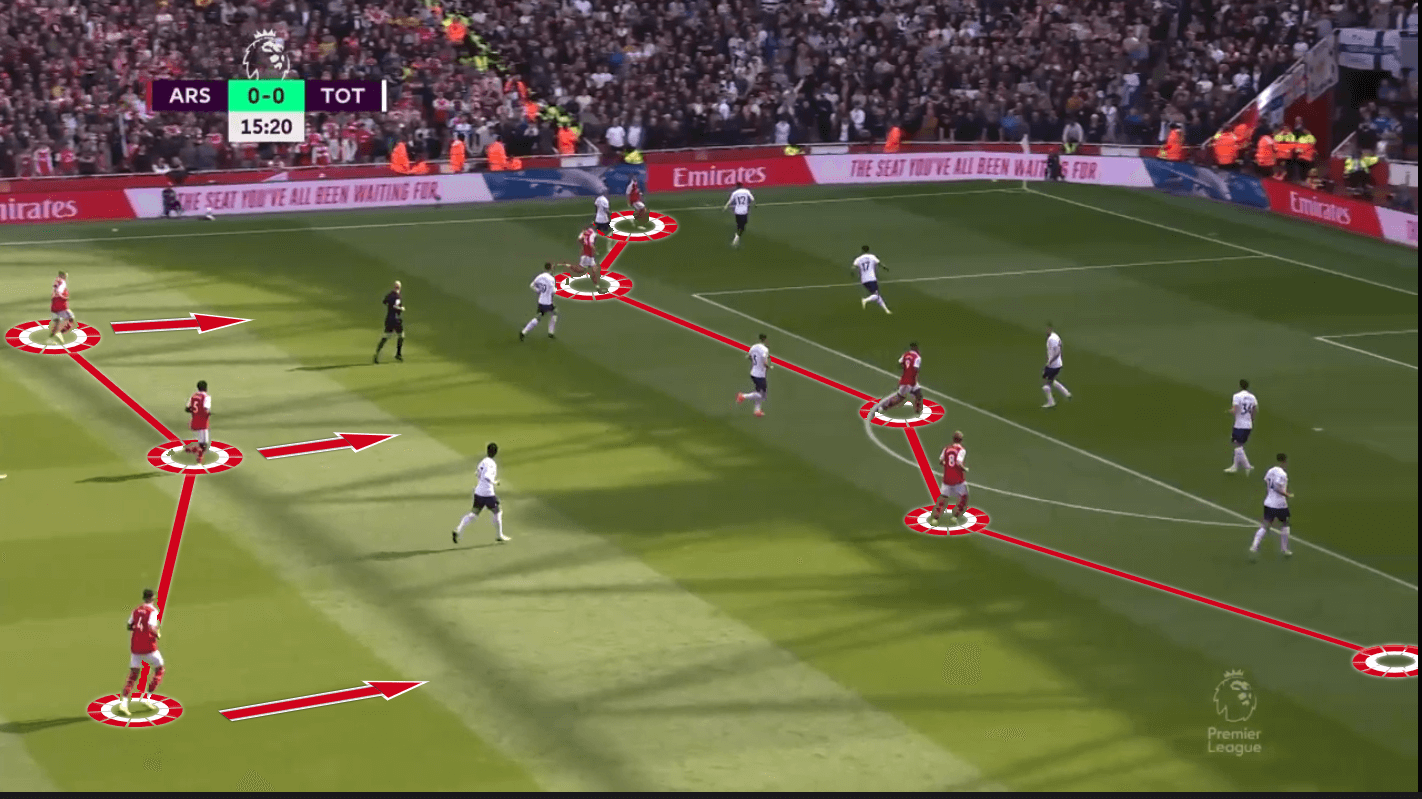Arsenal Football Club, with its illustrious history and rich traditions, is one of the most storied clubs in English football. Known for their attacking prowess and beautiful style of play, the Gunners have also undergone significant evolution in their defensive strategies over the years. From the legendary backlines of the past to the modern approaches under recent managers, Arsenal’s defense has seen a remarkable transformation. This article explores the evolution of Arsenal’s defense, highlighting key players and tactical shifts that have defined their approach over the decades.
The Early Years: The Foundation of Arsenal’s Defense
Arsenal’s defensive identity has roots that date back to the early 20th century. During the 1930s, the team, managed by Herbert Chapman, showcased a formidable defensive unit. The likes of Cliff Bastin and Frank Moss formed part of a team that not only won titles but also laid the groundwork for the club’s defensive philosophy.
Key Players:
- Frank Moss: As a goalkeeper, Moss was pivotal in ensuring a solid defensive foundation. His shot-stopping abilities and commanding presence in the box set a standard for future generations of Arsenal goalkeepers.
- Cliff Bastin: Although primarily known for his attacking contributions, Bastin also played a crucial role in tracking back and supporting the defense, demonstrating the importance of teamwork in the defensive structure.
The George Graham Era: Resurgence through Discipline
Fast forward to the late 1980s and early 1990s, when George Graham took the helm. Under his management, Arsenal adopted a pragmatic approach, focusing on defensive solidity. The team was built on a foundation of discipline and organization, which brought success in domestic competitions.
Key Players:
- Tony Adams: The embodiment of Arsenal’s defensive resilience, Adams captained the team for over a decade. His leadership, aerial ability, and reading of the game made him a cornerstone of Arsenal’s defense. Adams’ partnership with fellow defenders was crucial in establishing a robust backline.
- Steve Bould: Adams’ partner at the heart of the defense, Bould complemented his captain’s leadership with his intelligence and toughness. Together, they formed one of the most formidable defensive pairings in English football history.
Tactical Approach:
Graham’s tactics emphasized a compact defensive shape, often employing a back four that was difficult to penetrate. The team would sit deep and absorb pressure, launching quick counter-attacks through pacey wingers like Ian Wright and David Rocastle. This balance of defense and counter-attacking football was instrumental in securing two league titles and a memorable victory in the 1993 FA Cup.
The Arsène Wenger Transformation: Embracing Attacking Football
The arrival of Arsène Wenger in 1996 marked a seismic shift in Arsenal’s philosophy. While Wenger is celebrated for his attacking style, his defensive tactics evolved significantly during his tenure. Wenger focused on nurturing young talent and promoting a more fluid style of play.
Key Players:
- Patrick Vieira: As a midfielder, Vieira played a pivotal role in both attack and defense. His physicality, tackling ability, and leadership allowed him to shield the defense effectively while transitioning the ball forward.
- Martin Keown: A key figure in Wenger’s defensive setup, Keown brought experience and tenacity to the backline. His no-nonsense approach and ability to read the game were vital in organizing the defense.
Tactical Evolution:
Wenger shifted from a rigid backline to a more dynamic approach, promoting a high defensive line that encouraged pressing higher up the pitch. The introduction of zonal marking allowed players to cover space rather than specific opponents, leading to a more fluid defensive structure. While this approach initially brought success, it also exposed vulnerabilities against fast, counter-attacking teams.
The Invincibles: A Defensive Masterclass
One of the crowning achievements of Wenger’s era came during the 2003-2004 season when Arsenal went unbeaten in the Premier League, earning the title of «The Invincibles.» The defense during this period was not only resilient but also integral to the team’s attacking fluidity.
Key Players:
- Sol Campbell: A dominant presence at the back, Campbell’s combination of strength, pace, and aerial prowess made him a crucial component of the defense. His partnership with Kolo Touré brought both stability and athleticism to the backline.
- Kolo Touré: The Ivorian defender complemented Campbell’s physicality with his speed and agility. Touré’s ability to cover ground quickly allowed Arsenal to maintain a high defensive line without compromising security.
Tactical Philosophy:
The Invincibles utilized a combination of disciplined defending and quick transitions. Wenger’s philosophy of playing out from the back enabled the team to maintain possession and dictate the tempo, often leading to defensive solidity through ball retention. The defense, underpinned by communication and understanding, became a hallmark of Arsenal’s success.
The Post-Wenger Era: Struggles and Adjustments
Following Wenger’s departure in 2018, Arsenal faced a period of instability both defensively and in overall team performance. The challenges were highlighted by a series of high-profile defensive errors, leading to significant scrutiny of the backline.
Key Players:
- Shkodran Mustafi: Arriving amidst much fanfare, Mustafi struggled to live up to expectations. His time at Arsenal was marked by inconsistency, showcasing the difficulties the club faced in maintaining defensive quality.
- David Luiz: The Brazilian brought experience and flair to the defense but also became synonymous with moments of recklessness. His high-risk approach often exposed vulnerabilities in the backline.
Tactical Shifts:
Under Unai Emery and later Mikel Arteta, Arsenal’s defensive tactics underwent significant changes. Emery introduced a more pragmatic approach, focusing on organization and discipline. Arteta continued this trend, implementing a 4-2-3-1 or 3-4-3 formation that emphasized defensive solidity.
Mikel Arteta’s Revolution: A Return to Defensive Solidity
Mikel Arteta’s appointment as head coach marked a new era for Arsenal’s defense. Drawing inspiration from his time as an assistant at Manchester City, Arteta implemented a tactical structure that emphasized defensive organization, discipline, and collective responsibility.
Key Players:
- Gabriel Magalhães: The Brazilian center-back has quickly become a stalwart in the backline. His physicality, aerial ability, and composure under pressure have been vital in solidifying Arsenal’s defense.
- Ben White: Arriving from Brighton, White’s versatility and ball-playing ability have added a new dimension to Arsenal’s defensive unit. His capability to play as a right-back or center-back has provided Arteta with tactical flexibility.
Tactical Philosophy:
Arteta employs a structured defensive system that emphasizes pressing, compactness, and intelligent positioning. The use of a double pivot in midfield allows for additional protection for the backline, enabling Arsenal to absorb pressure while maintaining a threat on the counter. The focus on positional play has seen defenders engage in proactive defending, intercepting passes and cutting off passing lanes.
The Impact of Tactical Evolution on Arsenal’s Defensive Identity
Arsenal’s evolution in defensive tactics reflects broader trends in modern football. The increasing emphasis on possession-based play has necessitated that defenders not only excel at tackling and positioning but also possess ball-playing abilities. This shift has been particularly evident under Arteta, where defenders are expected to contribute to build-up play.
Key Tactical Features:
- High Pressing: Arteta’s system involves a coordinated pressing strategy that seeks to win the ball back quickly in the opponent’s half. This tactic reduces the need for defenders to be isolated and vulnerable.
- Zonal Marking: The implementation of zonal marking has allowed defenders to focus on occupying spaces rather than marking specific opponents, contributing to a more fluid and adaptable defensive structure.
- Sweeper-Keeper Role: With the arrival of Aaron Ramsdale, Arsenal has embraced a modern goalkeeper role that involves sweeping up behind the defense. Ramsdale’s ability to distribute the ball effectively has been pivotal in transitioning from defense to attack.
Challenges Ahead: Maintaining Defensive Cohesion
Despite the positive trends, Arsenal’s defense is still a work in progress. Maintaining consistency, especially against teams that exploit high defensive lines, remains a challenge. The balance between attacking flair and defensive discipline is delicate, and Arteta must navigate these challenges to achieve sustained success.
The Future of Arsenal’s Defense
As Arsenal looks to build on recent successes, the defense will play a crucial role in their ambitions. The integration of young talents alongside experienced players suggests a promising future, but continued investment and tactical refinement will be necessary.
Emerging Talents:
- William Saliba: The young French defender has shown immense potential and has quickly established himself as a key player in the backline. His ability to read the game and composure on the ball bodes well for Arsenal’s defensive future.
- Takehiro Tomiyasu: The versatile Japanese defender has adapted well to the Premier League, showcasing solid defensive skills and the ability to contribute to build-up play.
The Evolution of Arsenal’s Defensive Philosophy
The evolution of Arsenal’s defense over the years reflects the club’s ability to adapt to changing football landscapes. From the disciplined backlines of the past to the modern tactical approaches under Arteta, Arsenal has navigated various challenges and undergone significant transformation.
As the club strives to reclaim its status among the elite, the defense will remain a critical aspect of their identity. With a blend of experienced leaders and emerging talents, Arsenal has the potential to establish a formidable defensive unit that complements their attacking philosophy, ensuring a bright future for the Gunners in both domestic and European competitions.


